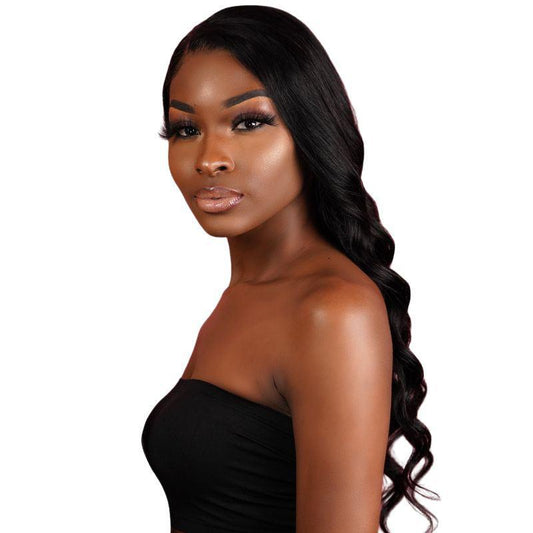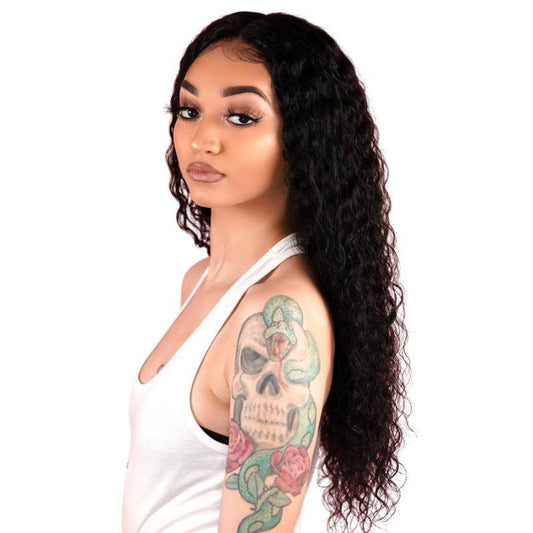Hair Bundles Blog | Tips, Trends, and Tutorials

Caring for Raw Indian Hair: A Comprehensive Gui...
Raw Indian hair is celebrated for its luster, strength, longevity, and versatility. To make them look best all the time, it is essential to maintain them properly. Raw Indian Hair...
Caring for Raw Indian Hair: A Comprehensive Gui...
Raw Indian hair is celebrated for its luster, strength, longevity, and versatility. To make them look best all the time, it is essential to maintain them properly. Raw Indian Hair...

The Journey of Raw Indian Hair: From Temple Don...
The raw materials to make hair extensions are sourced worldwide. During this search, you will find that there is no match for raw Indian hair due to its high quality, durability,...
The Journey of Raw Indian Hair: From Temple Don...
The raw materials to make hair extensions are sourced worldwide. During this search, you will find that there is no match for raw Indian hair due to its high quality, durability,...

Unveiling the Myths: Debunking Common Misconcep...
Raw Indian hair is the most sought-after hair extension in current hair styling. Their high demands are due to their natural texture, styling versatility, and longevity. However, like all other...
Unveiling the Myths: Debunking Common Misconcep...
Raw Indian hair is the most sought-after hair extension in current hair styling. Their high demands are due to their natural texture, styling versatility, and longevity. However, like all other...

Why Raw Indian Hair Is the Gold Standard for Ve...
A gold standard has been set by raw Indian hair in the hair extensions industry for hair styling. They are the most celebrated choice of hair extensions due to their...
Why Raw Indian Hair Is the Gold Standard for Ve...
A gold standard has been set by raw Indian hair in the hair extensions industry for hair styling. They are the most celebrated choice of hair extensions due to their...

The Science Behind the Strength: What Makes Raw...
For humans, hair is the most essential part of one's look and identity. Historically, people have tried different methods to enhance their hair's look and health. Raw Indian Hair is...
The Science Behind the Strength: What Makes Raw...
For humans, hair is the most essential part of one's look and identity. Historically, people have tried different methods to enhance their hair's look and health. Raw Indian Hair is...

Raw Indian Hair vs. Other Hair Types: A Compara...
Hair extensions offer great variety to their users in terms of texture, longevity, styling, and cost-effectiveness. Each hair type possesses a unique set of these characteristics and is designed to...
Raw Indian Hair vs. Other Hair Types: A Compara...
Hair extensions offer great variety to their users in terms of texture, longevity, styling, and cost-effectiveness. Each hair type possesses a unique set of these characteristics and is designed to...

Achieving a Remarkable Look with Afro Kinky Bun...
If you’re like me, you probably have a toxic relationship with your hair. It’s beautiful and voluminous; you felt special when Beyoncé sang about your nappy curls in Brown Skin...
Achieving a Remarkable Look with Afro Kinky Bun...
If you’re like me, you probably have a toxic relationship with your hair. It’s beautiful and voluminous; you felt special when Beyoncé sang about your nappy curls in Brown Skin...

Protective Styling with Afro Kinky Bundles: A C...
Putting your hair in a protective style is tender, loving care. Is it that weather where you need to protect your natural hair? When the sun comes out, it brings...
Protective Styling with Afro Kinky Bundles: A C...
Putting your hair in a protective style is tender, loving care. Is it that weather where you need to protect your natural hair? When the sun comes out, it brings...

Styling Afro Kinky Bundles: Creative and Trendy...
Afro kinky bundles are not just your regular hair extensions. With their unique, tightly coiled texture, these bundles offer endless opportunities for creative styles. These bundles are a dream come...
Styling Afro Kinky Bundles: Creative and Trendy...
Afro kinky bundles are not just your regular hair extensions. With their unique, tightly coiled texture, these bundles offer endless opportunities for creative styles. These bundles are a dream come...

Answering the Top Questions about Afro Kinky Bu...
Afro kinky bundles are popular for those looking to enhance their natural hair with high volume and the best texture. Tight twists and curls characterize these bundles and are famous...
Answering the Top Questions about Afro Kinky Bu...
Afro kinky bundles are popular for those looking to enhance their natural hair with high volume and the best texture. Tight twists and curls characterize these bundles and are famous...

How to Install Afro Kinky Bundles for Maximum V...
Have you dreamt of having a show-stopping, head-turning mane of Afro hair? However, whatever you do, you cannot get the locks that you dream of. If that's the case, you...
How to Install Afro Kinky Bundles for Maximum V...
Have you dreamt of having a show-stopping, head-turning mane of Afro hair? However, whatever you do, you cannot get the locks that you dream of. If that's the case, you...

How to Keep Your Loose Wave Bundles Frizz-Free ...
Loose wave extensions are popular in hair styling. They offer a loose wave pattern and perfectly mimic natural hair. They are an easy option for quick styling. However, following a...
How to Keep Your Loose Wave Bundles Frizz-Free ...
Loose wave extensions are popular in hair styling. They offer a loose wave pattern and perfectly mimic natural hair. They are an easy option for quick styling. However, following a...










